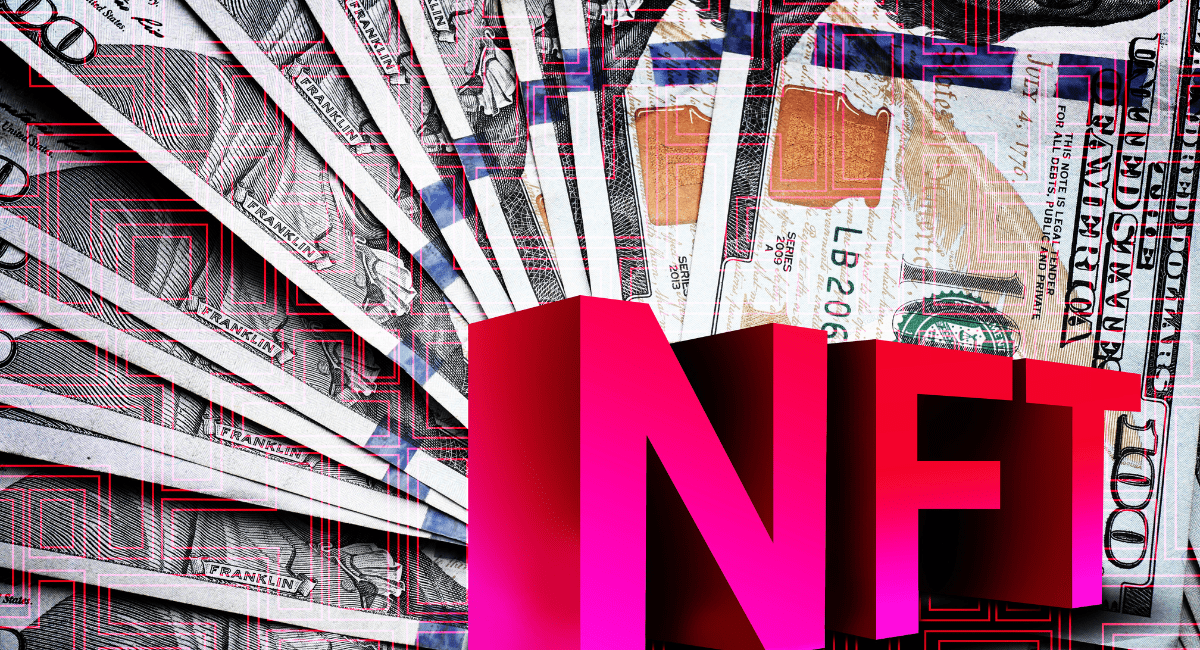What Are Inflationary And Deflationary Tokens And Top 3 Ways They Affect Market Liquidity

The cryptocurrency market is a realm of constant innovation, with various token models emerging to cater to diverse economic philosophies. Two prominent types of tokens that have gained significant attention are inflationary and deflationary tokens. Understanding the dynamics and implications of these tokenomics is crucial for investors, developers, and enthusiasts navigating the complex landscape of decentralized finance. In this comprehensive guide, we delve into the fundamental concepts of inflationary and deflationary tokens, exploring their characteristics, use cases, and the impact they have on the broader crypto ecosystem.
Inflationary Tokens: Unveiling the Supply Increase Mechanism

In the realm of cryptocurrency, the economic design of tokens plays a crucial role in shaping the behavior of the network and influencing the decisions of investors and developers. One significant category of tokens that has gained prominence is inflationary tokens. These tokens operate on a supply increase mechanism, where the total token supply expands over time. In this detailed exploration, we delve into the intricacies of inflationary tokens, examining their definition, mechanisms, use cases, challenges, and the broader impact they have on the cryptocurrency landscape.
A. Definition and Mechanism:
- Inflationary Dynamics:
- Inflationary tokens are characterized by a design philosophy that embraces a continuous increase in the total supply of the cryptocurrency.
- Unlike deflationary tokens, which aim to reduce the supply, inflationary tokens follow a model where new tokens are introduced into circulation periodically.
- Supply Increase Mechanism:
- The supply increase in inflationary tokens is often facilitated through mechanisms like block rewards or periodic issuance.
- In proof-of-work (PoW) and proof-of-stake (PoS) blockchain networks, miners or validators are rewarded with newly minted tokens for their contribution to the network’s security and maintenance.
B. Use Cases of Inflationary Tokens:
- Network Security Incentives:
- Inflationary models are commonly employed to provide ongoing incentives for participants to secure and validate transactions on the blockchain.
- These incentives play a crucial role in attracting and retaining miners or validators, contributing to the overall robustness of the network.
- Long-Term Sustainability:
- Inflationary tokens are often associated with ensuring the long-term sustainability of the network by providing continuous rewards to participants.
- This model aims to foster a healthy and secure ecosystem, especially during the early stages of a blockchain’s development.
C. Challenges and Considerations:
- Potential for Token Devaluation:
- Critics argue that the continuous issuance of new tokens may lead to a devaluation of the existing tokens in circulation.
- Balancing the rate of inflation to avoid dilution of value is a challenge that developers must address.Economic Stability:
- Achieving economic stability in the face of inflation requires careful planning and consideration of the tokenomics.
- Developers must strike a balance between providing incentives for network participants and maintaining the value proposition for holders.
Inflationary tokens, with their continuous supply increase mechanism, play a vital role in sustaining and incentivizing blockchain networks. As demonstrated by prominent examples like Ethereum and Cardano, these tokens contribute to the security and longevity of decentralized ecosystems. However, developers face the ongoing challenge of managing inflation rates to maintain economic stability and address concerns related to token devaluation.
As the cryptocurrency landscape evolves, the future of inflationary tokens may witness the emergence of innovative models, including hybrid approaches and adaptive mechanisms. Investors and developers alike must remain vigilant, continuously monitoring and adapting to the changing dynamics of inflationary tokenomics. Navigating the inflationary token landscape requires a delicate balance between providing incentives for network participants and preserving the value proposition for token holders.
Currently, Solana is an inflationary token. However, Solana’s inflation rate is based on a pre-determined disinflationary schedule as can be seen here https://t.co/XffYlCmuu3
It started out at 8% and decreases every year (epoch year – approximately 180 epochs) by 15% until it…
— Amy Street💫 (@Iamamystreet) January 3, 2024
Deflationary Tokens: Navigating the Path of Scarce Supply

In the intricate realm of cryptocurrency, tokenomics serves as the backbone that defines the economic principles governing blockchain networks. Deflationary tokens have emerged as a fascinating category, operating on the philosophy of reducing the total token supply over time. This comprehensive guide navigates the complexities of deflationary tokens, unveiling their definition, mechanisms, use cases, challenges, and the broader impact they have on the cryptocurrency landscape.
A. Definition and Mechanism:
- Embracing Scarcity:
- Deflationary tokens are distinguished by a deliberate and systematic reduction in the total token supply, aiming to create scarcity.
- This reduction is typically achieved through mechanisms like token burning, where a portion of the tokens is intentionally destroyed, making the remaining tokens rarer.
- Supply Reduction Mechanism:
- The supply reduction in deflationary tokens is a proactive step, often embedded in the token’s smart contract.
- Token burning, which involves sending tokens to an unrecoverable address, decreases the circulating supply and contributes to the perception of scarcity.
B. Use Cases of Deflationary Tokens:
- Scarcity and Value Appreciation:
- Deflationary models are designed to enhance the value proposition of the tokens over time by limiting their availability.
- The perceived scarcity creates a potential for price appreciation, attracting investors seeking assets with appreciating value.
- DeFi Projects and NFTs:
- Many decentralized finance (DeFi) projects and non-fungible token (NFT) platforms employ deflationary models to create a sense of rarity for their native tokens.
- This scarcity is often tied to specific functionalities or incentives within the respective ecosystems.
C. Challenges and Considerations:
- Liquidity and Utility Concerns:
- While scarcity can contribute to value appreciation, excessive token burning may lead to reduced liquidity and limited utility.
- Striking a balance between scarcity and the practicality of using the token is a challenge for developers.
- Economic Stability:
- Maintaining economic stability in the face of deflation requires careful consideration of the tokenomics.
- Developers must address potential challenges related to excessive scarcity and its impact on the token’s usability.
Deflationary tokens, with their intentional reduction in supply, offer a unique perspective on creating scarcity and potential value appreciation. As illustrated by examples like Binance Coin and SafeMoon, these tokens attract attention for their innovative approaches to tokenomics.
Comparative Analysis: Inflationary vs. Deflationary Tokens

The world of cryptocurrency is marked by a diversity of token models, each influencing economic behavior and investment decisions. Two significant paradigms that shape tokenomics are inflationary and deflationary tokens. In this extensive comparative analysis, we explore the nuanced differences between these token types, shedding light on their supply dynamics, economic impact, market perceptions, real-world examples, and potential future trends.
I. Supply Dynamics: Growing vs. Diminishing
A. Inflationary Tokens:
- Growing Supply Dynamics:
- Inflationary tokens exhibit a characteristic of continuously increasing the total token supply.
- This growth is often facilitated through mechanisms like block rewards or periodic issuance, providing ongoing incentives for network participants.
B. Deflationary Tokens:
- Diminishing Supply Dynamics:
- Deflationary tokens, in contrast, deliberately reduce the total token supply over time.
- Token burning, a common mechanism, involves destroying a portion of the tokens, creating scarcity and potential value appreciation.
C. Comparative Analysis:
- Balancing Act:
- Inflationary tokens focus on sustaining network participation by providing continuous incentives.
- Deflationary tokens aim to create scarcity, potentially leading to increased value over time.
- The choice between growth incentives and scarcity value depends on the project’s goals and the desired economic outcomes.
II. Economic Impact: Stability vs. Scarcity Value
A. Inflationary Tokens:
- Stability Perception:
- Inflationary tokens may be perceived as more stable due to the continuous supply growth.
- The ongoing issuance provides a sense of predictability and stability for token holders.
B. Deflationary Tokens:
- Scarcity Value:
- Deflationary tokens attract interest due to the potential scarcity value and the possibility of price appreciation.
- Investors seeking assets with appreciating value are drawn to deflationary models.
C. Comparative Analysis:
- Divergent Economic Goals:
- Inflationary tokens prioritize economic stability and sustained participation.
- Deflationary tokens focus on creating scarcity value and attracting speculative interest.
- The economic impact is influenced by the project’s objectives and the preferences of its user base.
III. Market Perception: Stability vs. Speculative Interest
A. Inflationary Tokens:
- Perceived Stability:
- Inflationary tokens are often perceived as more stable due to the predictable and continuous supply growth.
- This stability may attract conservative investors seeking a predictable store of value.
B. Deflationary Tokens:
- Speculative Interest:
- Deflationary tokens generate speculative interest as investors are attracted to the potential for scarcity-driven value appreciation.
- The scarcity narrative can lead to increased demand and trading activity.
C. Comparative Analysis:
- Investor Preferences:
- Inflationary tokens appeal to those seeking stability and continuous incentives.
- Deflationary tokens attract investors looking for assets with limited supply and potential for price appreciation.
- Market perception varies based on individual risk tolerance and investment goals.
IV. Real-World Examples: Learning from the Cryptocurrency Landscape
A. Inflationary Tokens:
- Ethereum (ETH):
- Ethereum, a leading blockchain platform, is transitioning to a proof-of-stake model with Ethereum 2.0.
- The inflationary rewards aim to incentivize validators and secure the network.
B. Deflationary Tokens:
- Binance Coin (BNB):
- Binance Coin employs a deflationary model, periodically burning a portion of BNB tokens based on the trading volume on its platform.
- The token burning contributes to scarcity and potential value appreciation.
C. Comparative Analysis:
- Diverse Approaches:
- Ethereum embraces inflationary rewards to secure its network.
- Binance Coin uses token burning to create scarcity and enhance the token’s value.
- The examples highlight the diverse approaches based on project goals and economic philosophies.
V. Future Trends: Evolving Tokenomics in a Dynamic Landscape
A. Hybrid Models:
- Balancing Mechanisms:
- Some projects are exploring hybrid models that combine elements of both inflationary and deflationary mechanisms.
- This approach seeks to strike a balance between providing ongoing incentives and creating scarcity.
B. Community Governance:
- Decentralized Decision-Making:
- Projects are adopting decentralized governance models, allowing the community to actively participate in decision-making.
- Community engagement ensures alignment with the values and preferences of token holders.
C. Comparative Analysis:
- Adaptability and Innovation:
- The future may witness the emergence of innovative models that combine inflationary and deflationary elements.
- Decentralized governance ensures a more inclusive decision-making process.

Conclusion:
In the ever-evolving landscape of cryptocurrency, the dynamics of inflationary and deflationary tokens play a pivotal role in shaping the economic principles of blockchain networks. Both models have their merits and challenges, and their implications extend beyond individual projects to influence the broader crypto ecosystem. As developers and investors navigate this intricate terrain, a nuanced understanding of tokenomics becomes essential for making informed decisions and contributing to the sustainable development of decentralized finance. Whether one leans toward the scarcity of deflationary tokens or the continuous incentives of inflationary models, the journey through the crypto landscape is marked by innovation, adaptability, and a continual pursuit of economic equilibrium.




























































